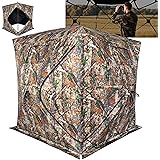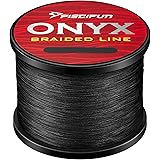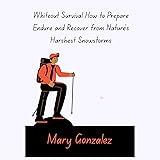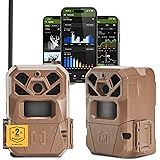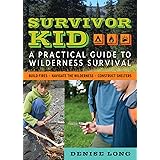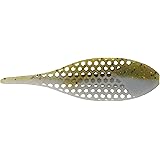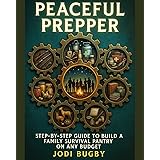Imagine a scenario deep within the backcountry, miles from conventional emergency services. A fellow adventurer suffers a significant laceration, or perhaps an unexpected allergic reaction escalates rapidly. Standard first aid might stabilize the situation, but true wilderness resilience demands more. It requires a comprehensive, expertly curated wilderness medicine first aid kit designed for extended operations and serious trauma. The video above provides an insightful overview of a robust base camp or bug-out medical kit. However, for those operating in austere environments, understanding the deeper rationale and expanding on specific components is crucial.
The Imperative of Advanced Wilderness Medical Preparedness
Wilderness medicine extends far beyond simple bandaging. It encompasses the principles of advanced life support adapted for remote, resource-limited settings. Consequently, a basic first aid kit often proves insufficient for complex trauma or prolonged medical events. Expert practitioners, regardless of experience level, recognize the inherent adrenaline surge during emergencies. This physiological response can impair judgment and recall. Therefore, a meticulously organized and thoroughly understood outdoor medical kit is indispensable. Each item must serve a distinct purpose, and its application should be practiced.
The transition from minor injuries to critical incidents can be swift in the wild. Consequently, preparedness must scale to match potential challenges. This includes managing severe bleeding, addressing significant allergic reactions, and even closing wounds. A specialized kit empowers individuals to provide high-level care when professional help is hours, or even days, away. It transforms a reactive response into a proactive, life-saving intervention. Such a kit is not merely a collection of supplies; it represents a commitment to advanced readiness.
Assembling Your Wilderness Medical First Aid Kit: A Deep Dive
Building a top-tier wilderness medicine first aid kit requires thoughtful selection and organization. Every component should be chosen for its efficacy and utility in demanding conditions. This section will elaborate on the key categories of supplies, expanding on their specific roles and applications. Understanding these nuances is paramount for effective deployment.
The Foundation: Robust Organization and Accessibility
The choice of container for your bug-out medical kit is not trivial. As highlighted in the video, a robust system like the “Bug Out Roll” offers significant advantages. Its clear, heavy-duty zippered pockets allow for immediate visual identification of contents. This feature is particularly valuable during high-stress situations. Furthermore, the ability to hang the roll promotes accessibility and minimizes contamination risk. A well-organized kit facilitates a systematic approach to patient care.
Beyond the primary container, internal modularity is beneficial. Utilizing smaller pouches or distinct compartments for specific categories, such as injectables, wound care, or instruments, saves critical time. Replenishment protocols are equally vital. After each use, inventory must be updated and depleted items replaced promptly. This ensures the kit remains fully operational for subsequent emergencies. An unreplenished kit is a liability, not an asset.
Advanced Wound Management Essentials
Effective wound care is a cornerstone of wilderness medicine. Beyond basic dressings, a comprehensive kit integrates advanced materials for various wound types. The proper selection and application of these materials can prevent infection and promote healing.
-
Steri-Strips and Benzoin: Steri-Strips are adhesive wound closure strips. They are ideal for superficial lacerations where sutures might be overkill or unavailable. Benzoin, applied to the skin edges, significantly enhances Steri-Strip adhesion. This combination ensures longer-lasting closure, especially on active individuals or in moist environments. Its mechanism involves creating a tacky surface, improving the bond between skin and adhesive strip.
-
Silvadene vs. Bacitracin: Silvadene cream is a broad-spectrum antimicrobial agent, a classic choice for burn wounds. It is also effective for managing open wounds, preventing bacterial growth. However, a critical caveat exists: individuals with sulfa allergies must avoid Silvadene. In such cases, Bacitracin serves as an excellent alternative. Bacitracin is a common antibiotic ointment, effective against various skin pathogens. Always confirm patient allergies before application.
-
Diverse Tapes: Different tapes serve unique purposes. Medirip, also known as Coban, is a self-adhering elastic bandage. It provides compression without adhering to skin or hair, making it excellent for securing dressings or providing light support. Transpore tape, a 3M product, is microporous. This allows for skin breathability, preventing maceration during prolonged wear. Conversely, paper tape is gentler and often chosen for individuals with very sensitive skin or latex allergies. Each tape fulfills a specific function in secure dressing application.
-
Non-Adhering Dressings: Adaptic and Xeroform: These dressings are invaluable for managing exuding wounds. Adaptic is a non-adhering gauze dressing, impregnated with petroleum emulsion. It prevents the primary dressing from sticking to the wound bed. Xeroform is a petroleum-based gauze, similarly designed for non-adherence. It also contains 3% Bismuth Tribromophenate, providing a mild antibacterial effect. Both are crucial for minimizing pain and tissue disruption during dressing changes, particularly for burns or large abrasions. They maintain a moist wound environment, which is conducive to healing.
-
Oxymetazoline (Afrin Equivalent): This nasal decongestant is a potent vasoconstrictor. Its utility extends beyond nasal passages. When applied to bleeding wounds, especially superficial ones, it constricts local blood vessels. This significantly reduces blood flow. It is particularly effective for managing epistaxis (nosebleeds) or assisting with hemorrhage control in small lacerations. Furthermore, its rapid action can be psychologically reassuring for distressed patients, especially children.
Surgical Tools and Specialized Instruments
For medical professionals or those with advanced training, carrying specialized instruments dramatically expands care capabilities. These tools address situations beyond basic first aid.
-
Suture Material: Carrying sterile suture material allows for primary wound closure. For delicate areas like facial lacerations, 6-0 nylon is appropriate due to its fine gauge and minimal scarring. For areas under tension or over joints, 4-0 Prolene offers greater tensile strength. This is particularly useful for scalp lacerations or wounds spanning major articulations. Proper training in sterile technique and suturing is absolutely non-negotiable before attempting these procedures.
-
Bovie Cautery: A portable cautery pen (like a Bovie) is a battery-operated device that generates heat. It provides rapid hemostasis for small bleeders, sealing capillaries and arterioles. A key additional use is trephination for subungual hematomas. This involves creating a small hole in the nail plate to relieve pressure from blood accumulation underneath. The cautery makes this procedure quick and relatively sterile. However, awareness of battery life is crucial; a depleted unit is useless.
-
Syringes and Needles: Beyond administering injectables, sterile syringes have other uses. They are essential for thorough wound irrigation. High-pressure irrigation effectively removes debris and reduces bacterial load, significantly decreasing infection risk. Needles, beyond injections, can also be used for blister drainage or splinter removal.
-
Staple Removal Tool: For those who carry a skin stapler in their advanced kit, a staple removal tool is indispensable. It allows for safe and effective removal of staples once the wound has healed. This prevents unnecessary tissue trauma and facilitates proper wound assessment.
Strategic Pharmaceutical Deployment
Access to appropriate medications can be life-altering in wilderness settings. This requires a nuanced understanding of their indications and contraindications.
-
H1 and H2 Blockers: For allergic reactions, a dual approach is often recommended. H1 blockers, such as Diphenhydramine (Benadryl) or Cetirizine (Zyrtec), target histamine receptors, reducing symptoms like itching and hives. H2 blockers, like Famotidine (Pepcid) or Cimetidine (Tagamet), work synergistically. They help reduce systemic allergic responses, including hypotension and bronchospasm, particularly useful for severe insect stings or early anaphylaxis.
-
Broad-Spectrum Antibiotics: For extended trips or international travel, a selection of oral antibiotics is invaluable. Doxycycline is effective for certain types of malaria prophylaxis and various bacterial infections. However, it significantly increases photosensitivity, making sun protection vital. Ciprofloxacin (Cipro) is a workhorse for traveler’s diarrhea and urinary tract infections. Azithromycin (Z-Pak) is another excellent broad-spectrum option, requiring only a five-day course for sustained effect. Hydroxychloroquine may be considered for specific malaria prophylaxis depending on regional resistance patterns. Consultation with a travel medicine specialist is critical for appropriate selection and dosage for foreign deployments.
-
Aspirin: While often overlooked in a trauma kit, aspirin is a crucial component for suspected cardiac events. For adult patients experiencing chest pain suggestive of a myocardial infarction, chewable aspirin can significantly improve outcomes by inhibiting platelet aggregation. Its rapid administration can be life-saving in a remote setting. Aspirin also serves as a general analgesic and anti-inflammatory.
Personal Protective Equipment and Practical Considerations
Protecting both the patient and the rescuer is paramount. The video rightly emphasizes the critical importance of gloves. In a trauma situation, blood and other body fluids are inevitable. Consequently, a single pair of gloves is wholly inadequate. Carrying a significant quantity—at least half a dozen or more—is a non-negotiable requirement. Gloves become contaminated quickly. They must be changed between different injury assessments or after handling soiled materials. This prevents cross-contamination and protects against bloodborne pathogens. A sterile drape can create a cleaner field for invasive procedures, further enhancing safety.
Sustaining Readiness: Replenishment and Training
A wilderness medicine first aid kit is not a static entity; it requires continuous attention. Regular inventory checks and prompt replenishment of used or expired items are crucial. The speaker’s example of the depleted Bovie highlights this necessity. Equally important is ongoing training. The physiological response to an emergency, often termed an “adrenaline dump,” can degrade performance. Therefore, regular practice and drills with the kit’s contents are essential. Familiarity fosters efficiency and confidence. Moreover, staying updated on wilderness medicine protocols and techniques ensures optimal care delivery. This holistic approach guarantees readiness for any unforeseen medical challenge in the wild.


